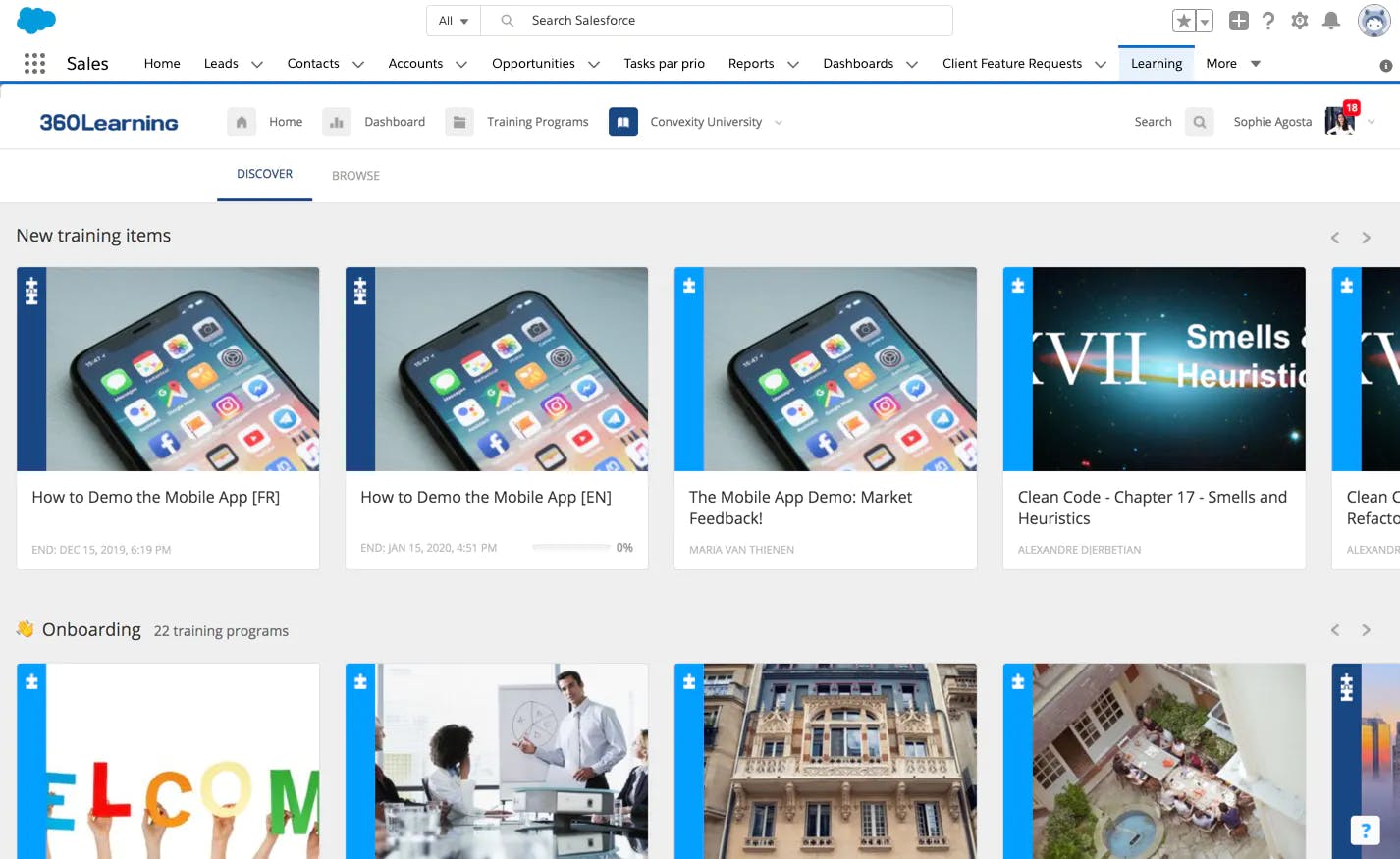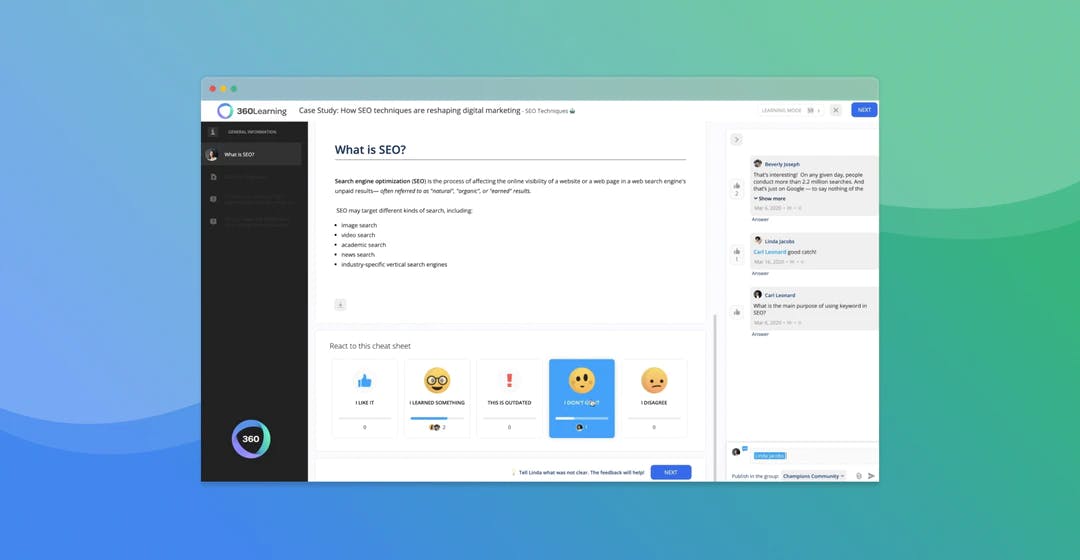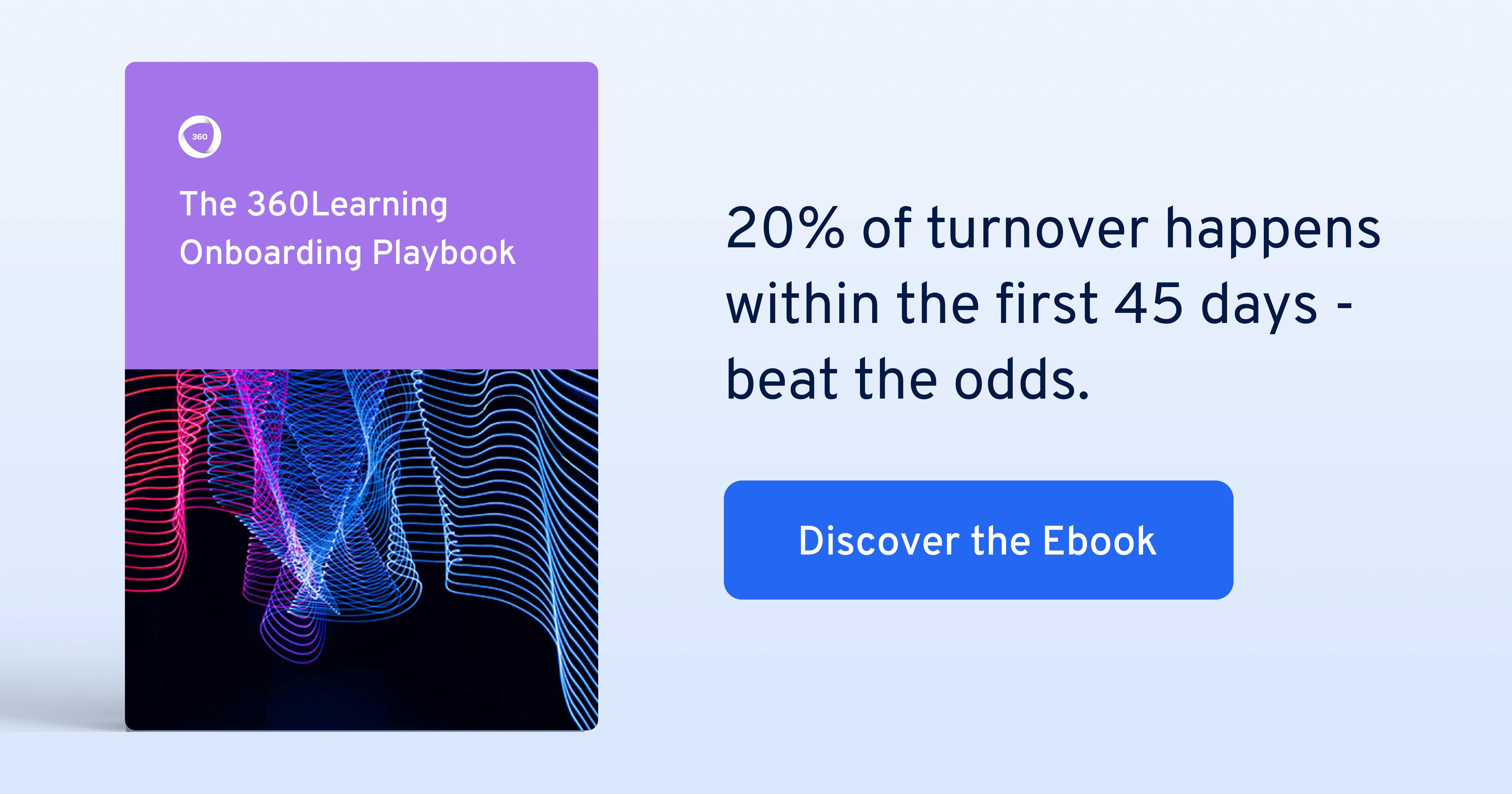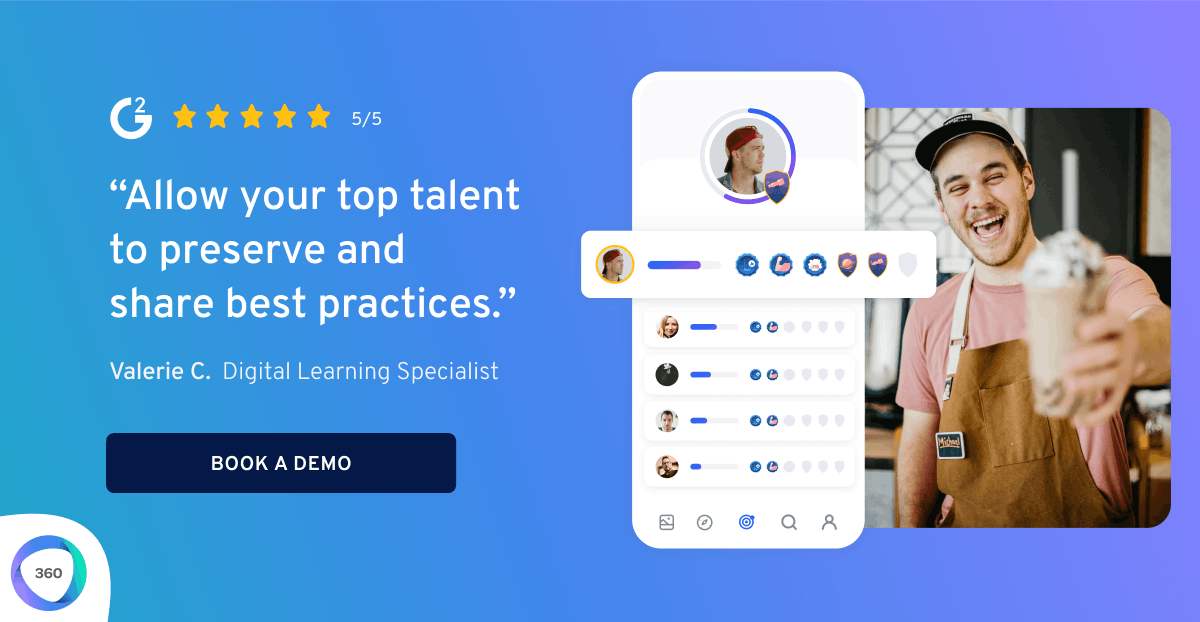A mere 12% of employees agree their organization does a good job of onboarding new employees. What’s more, if your organization isn’t among the ones that get onboarding right, it’s likely your new hires will be hunting for new jobs before you can say pro-ba-tion.
Considering how important onboarding is to long-term retention, applying onboarding best practices to your program is worth prioritizing.
You may add your unique flavor to onboarding, but certain tried-and-true practices are important to make your new hires feel fully integrated into your organization and ready to ace their jobs. Fail to follow these onboarding best practices, and you risk leaving employees feeling confused, stressed, and unhappy.
In this article, we’ll take a look at seven onboarding practices that can make or break the new employee experience at your company–and offer some tips to give your new hires the start they really deserve.
7 onboarding best practices for new employees
You need to get new employees up to speed as quickly and painlessly as possible. It should also be an enjoyable, encouraging experience. Here are the seven best practices you should follow.
1. Engage new hires with preboarding first
Preboarding includes onboarding activities conducted between the time an employee signs a contract to their first day on the job. New hires often suffer from cold feet and anxiety after signing a job offer, and failure to communicate at all before their first day may lead to second thoughts about joining your company. Not-so-fun fact: A whopping 65% of employers say candidates have accepted positions at their companies only to no-show on their first day of work.
Here are some preboarding to-dos to get new employees energized about their first day at work:
- Send a welcome kit: A welcome kit could include equipment like a laptop, company swag like T-shirts and mugs, a booklet with FAQs, and any other branded accessory that represents your organization.
- Send a what-to-expect email: Send a quick introductory email telling employees who they’ll meet on their first day, what to bring to work or have on hand in case they work remotely, and which tools they’ll be working with.
- Complete admin tasks: Get new employees started on admin tasks like signing employment forms, adding their bank information to your payroll system, and signing up for company tools like task management apps or expense management software before day 1, so their first day isn’t spent filling forms.
- Introduce new hires to the team: This includes their reporting manager, onboarding buddy, and other key teammates they’ll be working with. Schedule introductory meetings with each of these members for the first week itself.
- Give them an onboarding checklist: Include all activities new hires should complete before their first day and throughout their first few months, so they know what to expect during onboarding.
- Host informal get-to-know-you sessions: Invite new team members to informal team sessions, so they can introduce themselves and get to know others in the company, not just in their team.
A good preboarding experience prepares new hires to dive into onboarding well-prepared and informed.
Related: Want to learn more about how to perfect your preboarding process? Here are 9 preboarding strategies to engage new hires.
2. Introduce and demonstrate company values as early as possible
A strong company culture helps organizations succeed, and the best time to introduce company values is during the onboarding process itself.
You may have a company values presentation, e-book, or email you send to each new employee. But simply reading about company values on paper may not be the best way to show new hires what they mean in practice.
Consider having senior leaders or executives on your team deliver the presentation about company values while sharing anecdotes about the times different employees exemplified different values. Such stories can help make company values concrete and actionable for new employees. For instance, Nordstrom explains what great customer service means to them by sharing stories of employees warming up a customer’s car on a cold day and gift-wrapping items bought at another store.
We live by a framework called Convexity at 360Learning. It’s made up of 13 values, including Transparency, High Accountability, and Rational Thinking. While team members can be flexible in the way they work, we encourage transparency and accountability by making objectives and key results (OKRs) for each employee publicly available, along with performance ratings and achievements. Our Convexity culture is the foundation of our onboarding, and we start every new hire journey by explaining our 13 values mean and how we make them real.
Find better ways to introduce your company values with our onboarding playbook.
3. Provide opportunities to connect with other teammates
Social interactions at work contribute to employee satisfaction. But for new employees, it can be intimidating to start spontaneous conversations with teammates. This can be even more of a problem for onboarding remote employees, who don’t bump into others during a coffee break or lunch. So, provide ample opportunities and support for new team members to connect with other teammates and feel like a part of your company.
Before a new hire starts, inform and encourage other employees to welcome them. In your new hire announcement on Slack or email, mention where they’re from, their work experience, and what they’ll be working on, so teammates can craft a relevant welcome message.
Encourage onboarding buddies to introduce new hires to additional team members throughout the entire onboarding process. For instance, at Percolate, one of the responsibilities of an onboarding buddy is to take the new hire around the office to meet everyone. For larger teams, instruct onboarding buddies to introduce new hires to employees with overlapping interests or career paths.
You can also use an app like Donut to pair up random employees for a chat on Slack. Other opportunities for new hires to meet other teammates include after-work events like cook-offs, scavenger hunts, and game nights. If your team is fully remote, you can host virtual watercooler talks, coworking events, and non-work events like yoga sessions to encourage employees to socialize.
4. Let employees learn in the flow of work
Learning in the flow of work means getting answers to your questions right when you need them most, which is usually in the middle of a work task when you bump into a challenge. The faster new employees get answers to their questions, the more quickly they can ramp up in their role.
There are two ways to help new hires learn in the flow of work. The first is creating microlearning courses with specific information instead of hourlong videos or live training that cover too many topics at once.
The second step to encourage workflow learning is to store all training material in a central repository like a Collaborative Learning platform, where employees can easily search for information. Bonus points if employees also have the ability to request new material to address new Learning Needs when their search comes up empty.
A Collaborative Learning platform like 360Learning also integrates with tools employees use on a regular basis, like Salesforce.

This means sales reps don’t have to leave the Salesforce platform in the middle of work, in case they want to learn more about selling a new product or going from Contract to Validation in Salesforce. They can view the course right in the Salesforce platform and apply their knowledge immediately.
5. Avoid overloading new employees with information
Your new employee will need to soak in a lot of information in their first few days, but it doesn’t have to be all at once to avoid overwhelming them. Studies show consuming too much information at once leads to stress, fatigue, and poor decision-making.
Avoid handing over a laundry list of courses for employees to complete or interactive PDFs to read on their first day. Instead, pace their learning based on what they’ll need to know on a week-by-week basis. The first week may include presentations about company values, policies, and an overview of the new hire’s role. Subsequent weeks may introduce employees to work tools, best practices related to their job, and the way their team operates (check-ins, communications, updates).
Of course, you can’t condense all wisdom related to a specific role into 30 or 90 days of onboarding. So at some point, you’ll introduce employees to a central knowledge base or learning management system that allows them to learn at their own pace.
While self-directed learning offers more flexibility and engages employees, be sure not to leave employees with a password and login alone when you introduce them to your learning system. You need to create personalized learning paths for each employee based on their role, set learning goals, and check whether time spent on learning has a direct impact on business performance.
6. Conduct frequent check-ins with new hires
In a new hire’s first month, schedule weekly check-ins with their manager and onboarding buddy. These check-ins are helpful to discuss onboarding progress, remind new hires of important activities they are yet to complete, and identify whether they need any help or advice on managing their workload.
Check-ins are also a good time to discuss expectations around employee performance and deliverables so that new employees don’t keep guessing if they’re doing a good job. For instance, if you expect customer service reps to attend a certain number of calls per week or sales reps to make a specific number of client calls per week, be explicit about these expectations. Also, discuss key results employees must achieve, like winning X number of clients in a quarter or resolving X customer queries in a week.
To help new hires ramp up, set timelines around when you expect them to complete training, work on their first live project, and start delivering results. Once employees feel comfortable in their role, after their first month or two, you can transition to monthly check-ins.
7. Collect feedback from new hires
Feedback from new employees at the end of their first month or first 90 days helps you refine your onboarding process for future hires.
Send onboarding surveys to new hires after their first 30, 45, or 90 days to gauge their experience. New hire onboarding surveys should cover questions about manager availability, first-day and first-week experiences, HR preparedness, and the relevance of onboarding materials. Here are some example questions to include:
- Do you have a clear understanding of how to be successful in your role?
- How often do you communicate with your manager?
- Do you have a clear understanding of company policies?
- Were you given sufficient training to use work-related tools?
You could use multiple choice or a Yes/No format for the answers, and in certain cases, ask employees to rate their experience on a scale of 1-10.
Along with close-ended questions, consider adding open-ended questions to your new hire onboarding survey, such as:
- “If you could change one thing about our onboarding process, what would it be?”
- “What suggestions do you have to improve our onboarding process?”
Open-ended questions let you collect suggestions and ideas for improvement from new hires.
In a learning platform like 360Learning, you can also encourage reactions from employees on training courses directly:

Learners can also leave suggestions if they find a course outdated or unhelpful — another way to continually identify areas to improve your company’s onboarding experience.
Make onboarding new employees scalable with a Collaborative Learning Platform
General and role-specific onboarding training prepare employees to make the biggest possible impact in their first weeks and months. But for a growing company, scalable training is the only way to continue meeting your organization’s goals and objectives.
Scalable training means L&D teams shouldn’t have to spend tons of time creating training materials, updating courses, collaborating on course creation, and collecting feedback from learners. At the same time, learners should be able to easily find training materials, provide suggestions on improving courses, and access training in the flow of work.
A Collaborative Learning platform like 360Learning makes it easy to create courses for onboarding, collect learner feedback, and help employees learn in the apps they use most at work. Sign up for a demo to see how it works.




